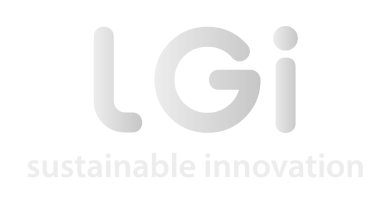What is NbS?
Nature-based Solutions (NbS) have already been implemented for a long time without being named as such, particularly in the fields of agriculture, forestry, water management, and in efforts to re-green cities. However, the concept has only started to become mainstream in the past few years, as has its strategic importance in the climate change arena, both as solutions for climate adaptation and mitigation. At the 2016 World Conservation Congress, members of the International Union for Conservation of Nature (IUCN) defined the use of nature for simultaneous benefits to biodiversity and human well-being for the first time, which has since become a reference. The IUCN coined Nature-based Solutions as “actions to protect, sustainably manage, and restore natural or modified ecosystems, that address societal challenges effectively and adaptively, simultaneously providing human well-being and biodiversity benefits”.
The good news for NbS supporters
The good news is that NbS is taken seriously today at the global and European level, with more than 30 European Horizon 2020 projects working on NbS (see Network Nature’s map of projects). NbS has also been identified as an important policy instrument to achieve the goals of the European Green Deal and other key policy objectives such as those set out in the EU Biodiversity for 2030 Strategy and the ambitions of “building back better” from the impact of COVID-19 in the EU Recovery plan. Their legitimacy is increasing, helped by the IUCN Global Standard for NbS, which is a common framework to design, assess and scale-up nature-based solutions. It is based on eight criteria which, together as whole, ensure that NbS projects are being developed without undermining aspects that are key to their long-term sustainability. These criteria also help the uptake of NbS, complementing or even replacing grey-technology solutions, or human-engineered infrastructure.
One of the key challenges today for NbS development is market uptake. An NbS offer is indeed emerging on the market and taking the shape of “Nature-based Enterprises” (NbEs). This is the beginning of a market curve: the uptake starts slow as demand from both the private and public sectors needs to be convinced about the environmental and economic viability of NbS, especially when compared to grey technologies that may seem more reassuring and stable. The transition may happen through hybrid solutions that combine green and grey solutions. Finding the right business model is also a challenge, and therefore showcasing the variety of options that are being tested around the globe and sharing successes and failures is key to inspiring more NbEs to find their model. There may also be innovative business models stemming from the hybridization of NbS with other forms of innovations (digital, materials, social, etc.) that could leverage the deployment of NbS, but this will require working beyond the sectorial silos that we face today.
Other key challenges facing the uptake of NbS are accessing funding, dealing with regulatory barriers and public procurement processes, and last but not least, being patient – as nature shows its results in a longer timescale!
How to scale your NbE?
Based on our work done so far, here are 6 enablers LGI recently shared at the Connecting Nature Enterprise Summit on 30 June during a session on “Growing your NbE” (link to video recording)
- Seek innovative funding and partnerships.
- Create bottom-up demand and acceptance for NbS, by co-creating the solutions with stakeholders.
- Set up action-oriented partnerships with new sectors and actors to whom NbS can offer solutions.
- Engage with technology innovators to develop enabling tools for scaling up.
- Connect to capacity-building structures.
- Promote your solutions with great marketing (a good example of NbS Merci Raymond).
A success story of Nature-based Enterprise
We met with the French “NbE” Fermes de Figeac during a study on NbEs coordinated by LGI and mandated by the French Agency for Ecological Transition (ADEME) for the Life Project ARTISAN on climate change adaptation. Fermes de Figeac was selected as a case study and is a great representative of what NbS can be for the agri-food sector.
In a nutshell, it is a French cooperative focused on sustainable agriculture and consumer distribution, based in the French Massif Central region. Beyond the cooperative model, it offers services to support farmers, from innovative “agronomic systems” that reduce environmental impacts, to the promotion and distribution of their agricultural and forestry products to potential consumers. It’s all done in a way that doesn’t reduce the territory’s nutritional potential or the farmers’ income. This offer includes different types of actions aimed at adapting current technical itineraries and production systems to climate change, while integrating climate change mitigation strategies and preserving biodiversity.
Founded in 1985, the cooperative’s economic model has changed throughout the years. It is now a private company. It relies on the capacity to lead the territory and develop initiatives with its farmer members while obtaining endorsement and co-funding from multiple partners. And it works!
Amid the challenges that lie ahead, we are positive that the future is bright for NbS, and in many ways that we may not expect today. If you are interested or already work on the topic, don’t hesitate to reach out!
Text by Joanne Schanté, inspired from the results of the recent study on NbEs led by LGI for ADEME (contact: Aurélie Tailleur). Results will be published and presented at the ARTISAN Forum in January 2022. We invite you to take part in the consultation on our recent EU publication on the Nature-based Economy, and meet us at the IUCN World Congress on 7 September 2021 in Marseille, France!





FOLLOW US